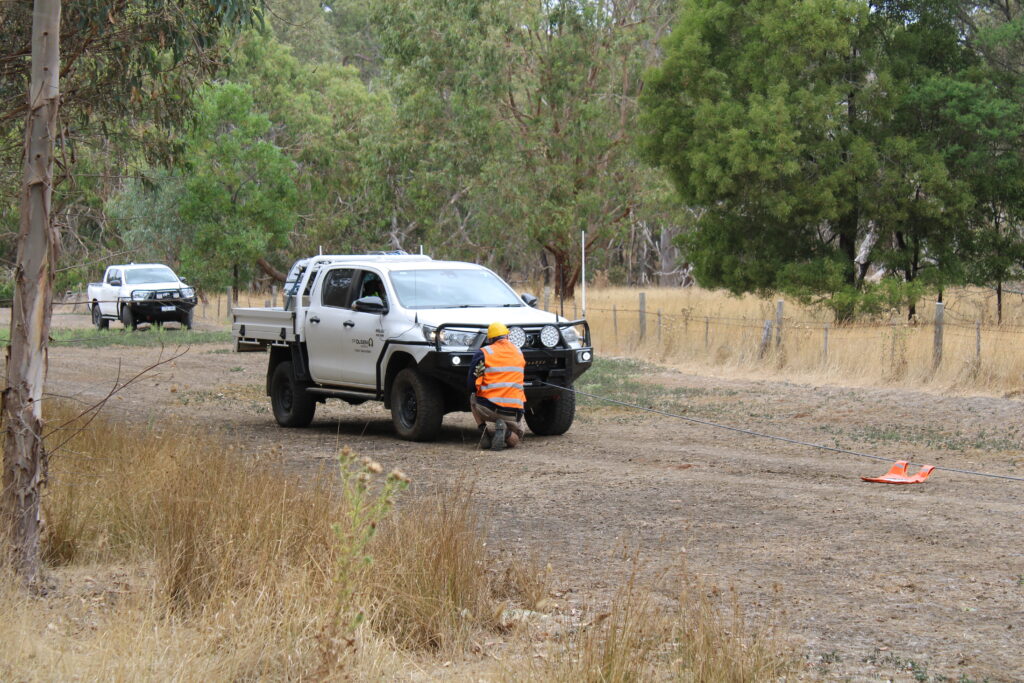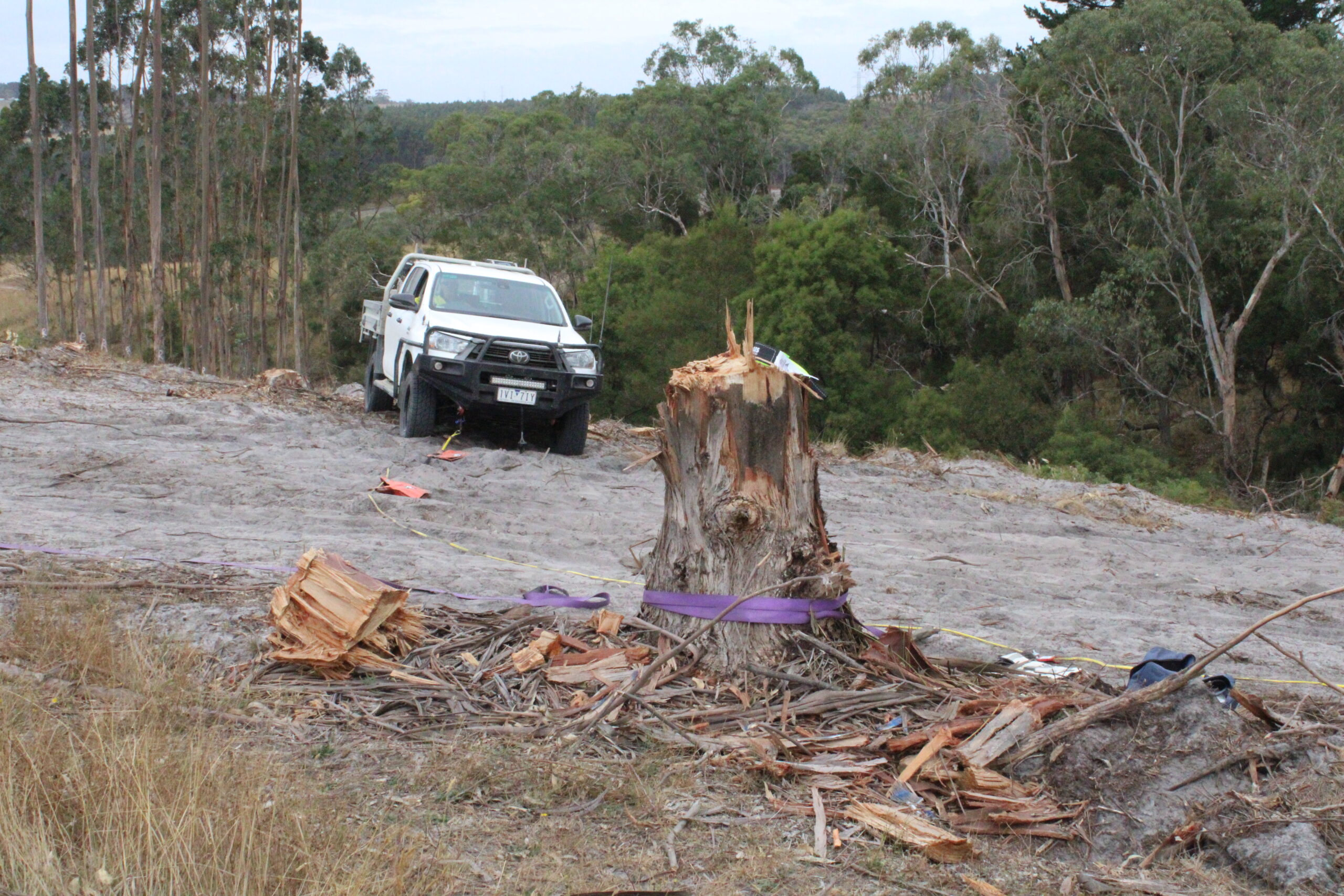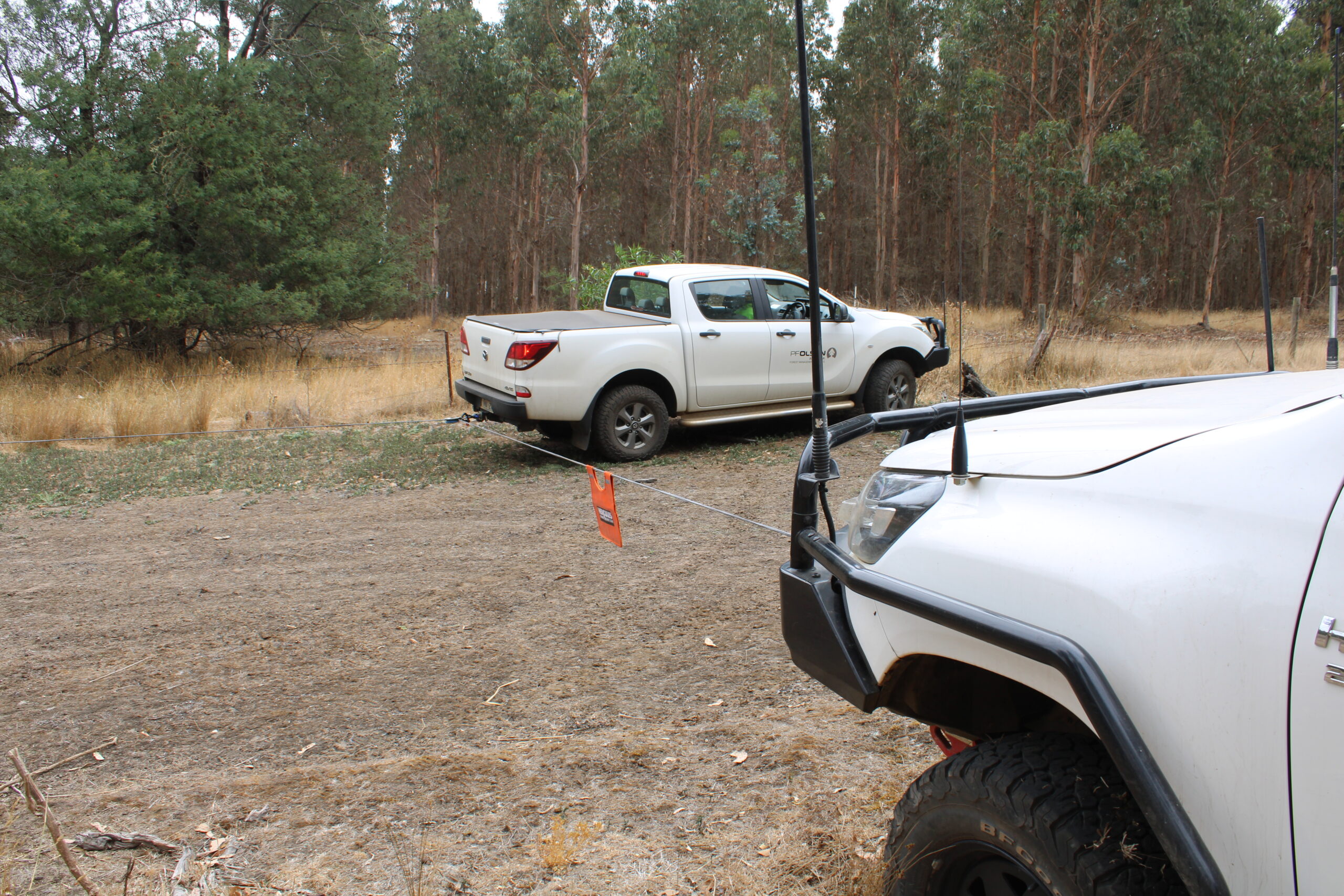Our non accredited winch recovery training covers all aspects of how to safely operate a winch. Training sessions can be adapted to cater for your companies needs.
A typical training day would cover
- Vehicle prestart checks
- Safe wheel change practices
- Operating a 4WD vehicle
- Self recovery techniques
- Tow recovery
- Winch Recovery
Additional training in the use of recovery straps and safely performing a snatch recovery can be included in the training day.
Please contact Greg to discuss your companies requirements.
General safety precautions
Follow these general winch safety precautions to reduce the risk of incidents when using winches for vehicle recovery:
- Make sure you’re fully trained in using the winch and performing safe winching operations.
- Wear sturdy gloves to protect your hands from injury, particularly when handling the winch rope.
- Never submerge a winch in water. If a winch is submerged, have a technician inspect and service it immediately to prevent corrosion damage and ensure its ongoing safety and reliability.
- Make sure the winch gets regular use and testing to ensure it remains serviceable.
- Check the winch rope and its fittings regularly for obvious damage. Replace any damaged, frayed or kinked winch rope immediately.
- Rewind the winch rope onto the winch drum neatly after use.
- Never use a winch as a hoist.
- Do not use the winch rope as a tow rope.
- Do not use the winch rope to secure cargo to a vehicle.
Safety when preparing a recovery task
Implement these safety precautions when preparing a recovery task:
- Practise and become familiar with the winch before you need to use it.
- Don’t rush—take the time to plan and prepare carefully.
- Estimate the load to be winched and ensure it doesn’t exceed the winch capacity.
- Use the correct equipment in the correct manner, and don’t take shortcuts.
- Recheck the winch rope and other equipment you’re using for serviceability and obvious damage.
- Ensure that the winch controls (remote pendant) are not plugged into the winch while you set up.
- Don’t exceed the rated safety capacity of the winch rope. Use a double line (2:1) recovery layout if required.
- Avoid anchoring the cable back onto the winch vehicle when using a 2:1 layout. This will halve the winching forces transmitted to the winch vehicle.
- If the winch rope must be anchored back onto the winch vehicle when using a 2:1 layout, don’t attach it to the winch frame, as this will double the forces acting on the frame. Attach it to the vehicle chassis.
- Don’t attach a winch rope to a vehicle’s tow ball, axles or suspension.
- Wear leather gloves when handling the winch rope. Don’t allow the winch rope to slide through the gloves.
- Use the hook strap supplied with the winch to pull the winch rope from the drum.
- Try to set up the winch rope so it’s retrieved at a 90-degree angle to the winch drum. This ensures you can rewind the rope onto the winch drum evenly and prevents damage and delays if over-stacking and binding occur.
- Don’t hook the winch rope back onto itself. Use a choker chain or sling instead.
- Remove any obstructions that could interfere with the safe winching operation.
- Ensure that any anchors used are strong enough to hold the load.
- Place a bag or blanket over the winch rope to minimise cable whiplash damage if the rope breaks. If you don’t have those, try using a heavy jacket or leafy branches.
- Have only one person in control of both the winch rope and winch controls (remote pendant).
- Establish a no-go safety zone for assistants and onlookers.
- Always act and think safely.




